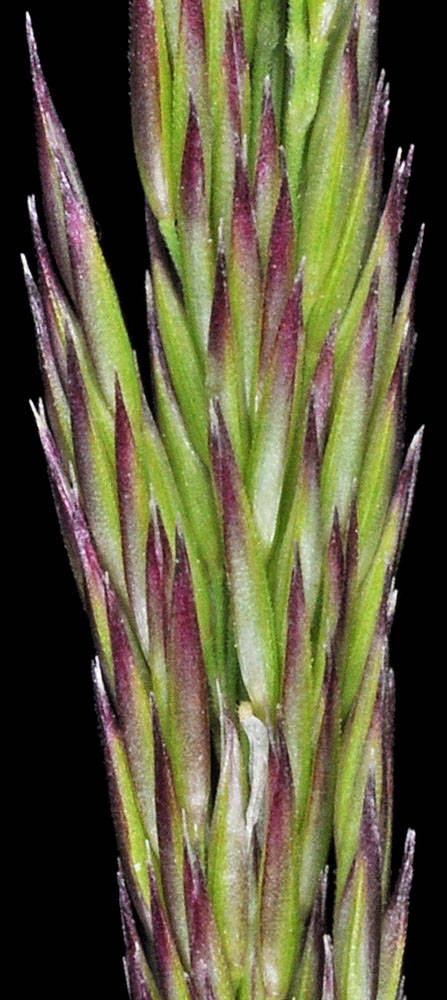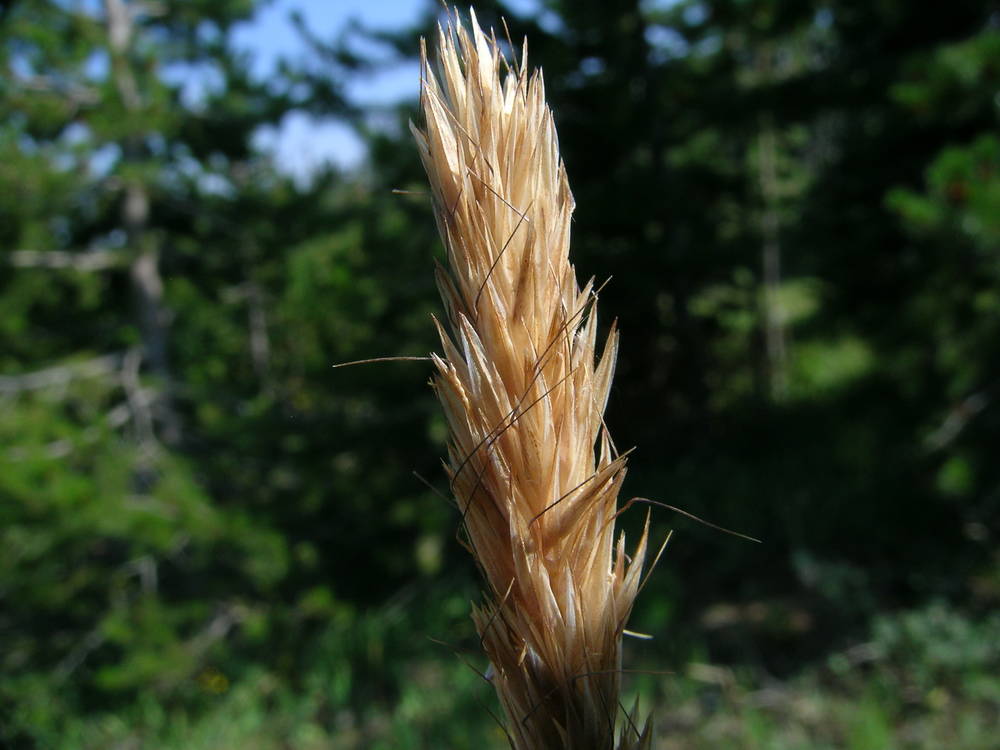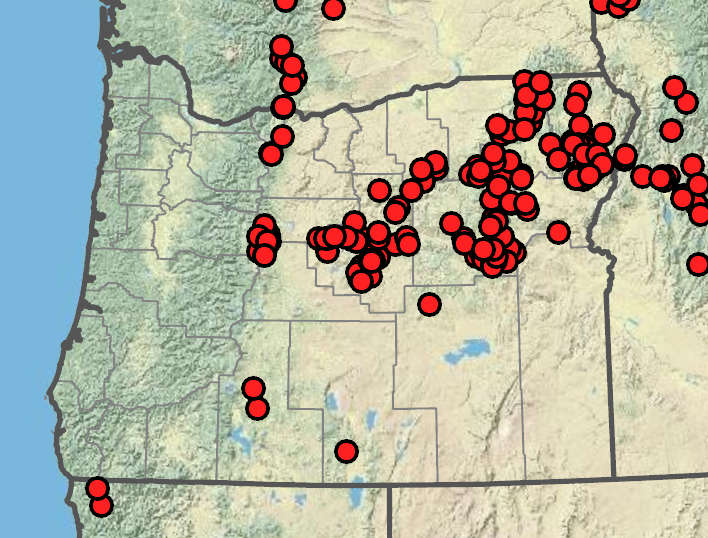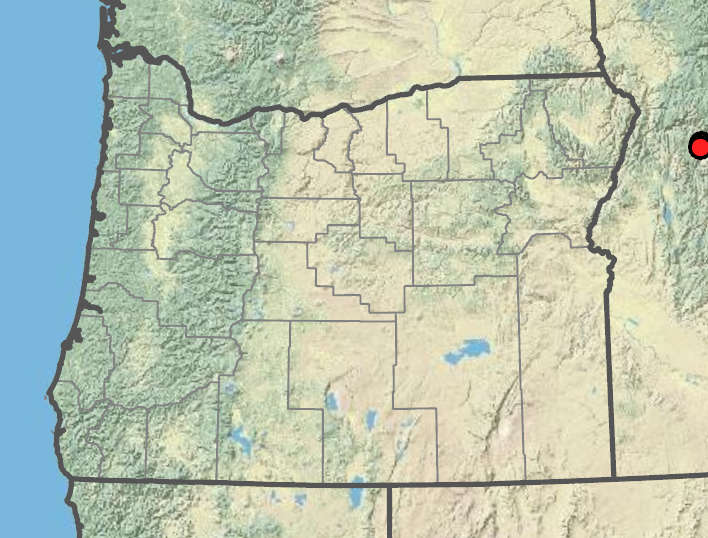Calamagrostis rubescens
Greeneochloa tweedyi
(synonym of Calamagrostis tweedyi)
pinegrass
Cascade reedgrass, Tweedy's reedgrass
sheaths smooth or slightly scabrous, rarely pubescent;
collars usually pubescent, rarely glabrous;
blades (6)8–40(42) cm × (1)2– 5(8)mm, usually flat;
lower surfaces smooth or slightly scabrous;
upper surfaces smooth, scabrous or sparsely pubescent.
sheaths and collars smooth;
blades (3)4–20(38)cm × (2)3–13 mm; flat;
lower surfaces smooth;
upper surfaces smooth or slightly scabrous, glabrous to sparsely to moderately pubescent on the veins.
(5)6–15(25) × 1–2.5 cm, contracted to somewhat open; erect, usually greenish to straw-colored, uncommonly purplish;
branches (1.2)2–3(6) cm, slightly scabrous, rarely densely long-scabrous;
spikelet-bearing to the base.
7–16(19) × (1)1.5–2 cm; erect, usually contracted; pale to dark purple;
branches (0.2)2.4–6.7(7.7)cm; smooth, sometimes sparsely scabrous distally;
spikelet-bearing to the base.
(3)4–4.5(5.5)mm, rounded to slightly keeled.
(4.5)5.5– 8(9)mm, keeled.
with hairs 0.5–1.5(2.5)mm, 20–50(60)% as long as the lemmas; sparse.
with hairs 0.8–1 mm, 20–33% as long as the lemmas; sparse.
2.5–4 mm, 0.5–2 mm shorter than the glumes;
lemma awns 2.8–3.5(4.5) mm, usually attached to the lower 20% of the lemma, rarely higher, exserted from the spikelet; stout, readily distinguished from the callus hairs, strongly bent.
4–6.5(7.5) mm, 0–1.5 mm shorter than the glumes, minutely scabrous;
lemma awns 6–11 mm, attached to the lower portion of the lemma, exserted more than 2 mm from the spikelet; stout; bent.
1.2–2.6 mm.
2–3.5 mm.
=28, 42, 56.
Calamagrostis rubescens
Greeneochloa tweedyi
Dry montane conifer forests. 800–2500m. BW, Casc, ECas, Lava. CA, ID, NV, WA; north to British Columbia, northeast to Saskatchewan, southeast to CO. Native.
Calamagrostis rubescens is a common community dominant with Carex geyeri in dry montane conifer forests east of the Cascades. Though it is usually identified by the curly, spreading hairs on its leaf collars, some collars may be glabrous. Examining several leaves will usually reveal pubescent collars somewhere on the plant. Similar C. koelerioides has glabrous collars and longer lemmas and awns. Established populations rarely flower, but low-intensity forest fires stimulate vigorous flowering.
[Originally published in Flora of Oregon as Calamagrostis tweedyi]
Montane to subalpine meadows and conifer forests. 1700– 2100m. Casc. WA. Native.
This uncommon Calamagrostis is recognized by its combination of broad leaves and long awns. Similar C. howellii, confined to the Columbia Gorge, has longer awns.
Barbara Wilson, Richard Brainerd, Nick Otting
- Local floras:
BC,
CA,
OR,
WA
- Local Web sites:
CalFlora,
CalPhotos,
Flora NW,
PNW Herbaria
WildflowerSearch
iNaturalist (observations)
USDA Plants Database
- LBJ Wildflower Center
- SEINet
- Plants of the World Online
- Encyclopedia of Life
- Wikipedia
- Google Image Search





